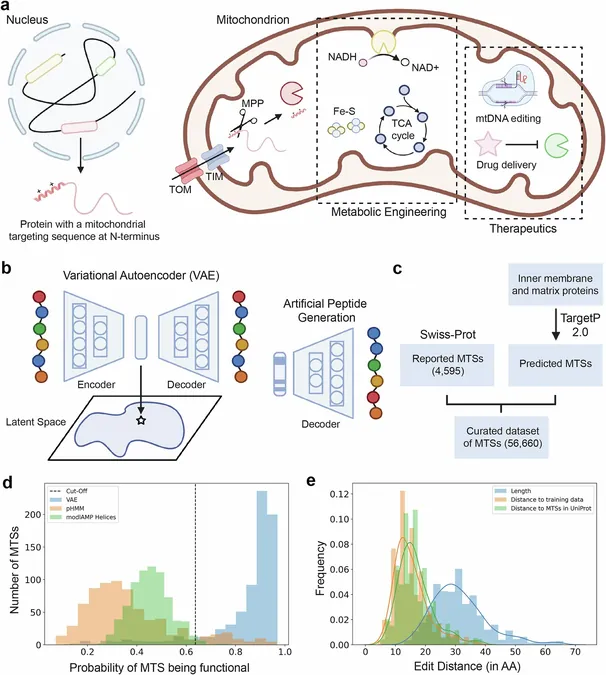
Revolutionizing Mitochondrial Research: The Power of Generative AI
2025-05-05
Author: Liam
Unlocking Mitochondrial Mysteries with Generative AI
Mitochondria are the powerhouses of our cells, essential for energy production and a host of metabolic processes. Yet, with only a few mitochondrial targeting sequences (MTSs) currently available, researchers are often limited in their study and manipulation of these vital organelles. A groundbreaking study from the Carl R. Woese Institute for Genomic Biology shines a light on how generative artificial intelligence can design new targeting sequences, expanding the toolkit available for metabolic engineering and disease therapies.
The Organelles That Power Life
Much like organs in the human body, each organelle in a cell has a distinct role, working together to sustain cellular function. Mitochondria, with their unique chemical properties, not only generate energy but also serve as hubs for various cellular processes. Their dysfunction has been linked to aging and numerous diseases, making effective research critical.
The Limitations of Current Targeting Sequences
Huimin Zhao, a leading researcher in the field, points out the challenges faced by scientists due to the limited number of MTSs. "Without sufficient targeting sequences, our understanding of mitochondrial biology suffers," Zhao notes. With current MTSs averaging around 35 amino acids and showing little variation, researchers often recycle the same sequences, which can hinder genetic stability.
Transforming Research with AI
Enter generative AI. By utilizing an advanced unsupervised deep learning framework, known as Variational Autoencoder, the research team was able to uncover intricate characteristics of MTSs. They produced a staggering one million AI-generated sequences, experimentally validating 41 of them through confocal microscopy in yeast, plant, and mammalian cells, achieving success rates ranging from 50% to 100%.
Applications Beyond the Lab
The implications of this research extend beyond academic curiosity. The new MTSs have potential applications in metabolic engineering and therapeutic protein delivery, opening new avenues for treatment innovations. Moreover, they pave the way for a deeper understanding of dual-targeting sequences that could help researchers better grasp how these mechanisms evolve.
A Pioneering Step in AI-Driven Science
This significant study not only marks the first time generative AI has been used by Zhao's research group but also sets a new standard for experimental validation in AI findings. Aashutosh Boob, the study's lead author, reflected on the rigorous journey through his Ph.D., highlighting the enriching experience of combining bench work with innovative AI applications.
The Future of Science is Here
As generative AI continues to make waves in the scientific field, its role in synthetic biology and biotechnology is becoming more crucial. Zhao emphasizes that with the increased interest in AI applications, this project exemplifies the technology’s potential to revolutionize our approach to biological research.









 Brasil (PT)
Brasil (PT)
 Canada (EN)
Canada (EN)
 Chile (ES)
Chile (ES)
 Česko (CS)
Česko (CS)
 대한민국 (KO)
대한민국 (KO)
 España (ES)
España (ES)
 France (FR)
France (FR)
 Hong Kong (EN)
Hong Kong (EN)
 Italia (IT)
Italia (IT)
 日本 (JA)
日本 (JA)
 Magyarország (HU)
Magyarország (HU)
 Norge (NO)
Norge (NO)
 Polska (PL)
Polska (PL)
 Schweiz (DE)
Schweiz (DE)
 Singapore (EN)
Singapore (EN)
 Sverige (SV)
Sverige (SV)
 Suomi (FI)
Suomi (FI)
 Türkiye (TR)
Türkiye (TR)
 الإمارات العربية المتحدة (AR)
الإمارات العربية المتحدة (AR)